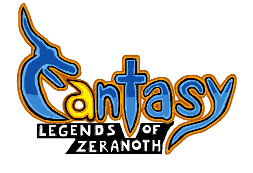I will name three offenders:
-Gex series
-Spyro the Dragon (PSX)
-Super Bub (Net Yaroze/PSX)
The issue here is player's orientation in the play field.
A good camera should not only give the player a sense of direction and show the play field, but also move in a smooth, natural way. Failing to notice the importance of the last feature will make the players wonder why the camera disobeys, their minds struggling with the view. It's as if you wanted to turn your head, but you couldn't, at least the way you wanted to. The camera is out of your control, pointing towards the ground or anywhere else than where you're supposed to go is a really bad idea.
Gex 1
Although it was in 2D, it has some serious camera issues. With the camera centering on the area before the protagonist, it swayed back and forth upon changing directions. Also, there where couple of factors that prevented me from finishing the game. First one is how many elements where repetitive. First couple of levels where painfully similar and limited voice-overs of the main character quickly became tiresome. In order to pass a small opening in the wall, you can't crawl underneath it. Also, I see no reason why the gecko isn't able to crawl on the floor or jump between narrow walls. TV static and flashes also contributed to the puke-factor. The game seemed to make fun of this by having Gex throw up at the screen after almost every level. Even the 1st boss level is named after that action, which the player is likely preform if exposed to all those elements I've mentioned. But I must admit that I liked climbing on almost every surface (very innovative) and the gecko looked cute doing so (and sticking its little tongue out)...
Gex 2-3
Bad camera in 3D! Not one, but three separate camera settings that fail to work properly. First one is manual, meaning that you have to control the camera, while running into the unknown. Second is the semi-automatic, where you have to run or wait for a while looking to wards a direction before the camera angle changes. Third one is the fully automatic camera that ruins your estimation of distance when platforming. The worst thing is that the game prevents you to actually use the camera, notably when you're too close to any wall. This is particularly annoying when a camera locks in such a way that you're forced to take a leap of faith on a moving ledge and be forced to walk all the way up if you happen to guess the jump wrong, falling into the bottom half of one level. Not only you're now unable to climb most surfaces, but you can quickly loose orientation by even trying.
Spyro the Dragon 1-3
The camera either feels as if it was forcefully dragged around like a dog on a leash each time Spyro makes a turn or it points to an angle where the scenery cannot be seen. While charging, it's near the ground and while walking, it points at the ground like an indecisive dragonfly.
Super Bub
A puzzle game with bright flashing colors, psychedelic, ever-changing backgrounds and whirlwinds colorful glitter. For masochists only!
Now for an example of a GOOD camera.
Ladies and gentlemen, take your notes and study Croc: Legend of the Gobbos.
Ladies and gentlemen, take your notes and study Croc: Legend of the Gobbos.
In that game you have three camera settings at your disposal, where you can simultaneously adjust its height and angle. It presents a wide and far view of the scenery, hovers at the right distance from the player and tilts a bit while jumping to allow a better view of the ledges and objects slightly above. It follows the main character in a natural and predictable manner and, in my opinion, it's what makes it such a good camera for a 3D platform game.
That's all for now.
I hope to write more entries soon enough.
Till next time!

No comments:
Post a Comment